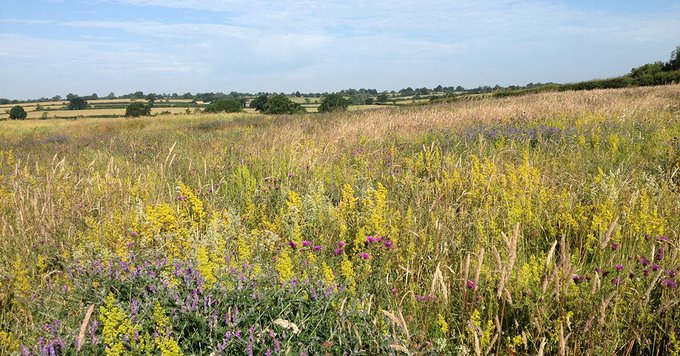
Andrew McGuire
@agronomistag
Followers
10,169
Following
1,213
Media
940
Statuses
10,956
Views of an agronomist on soil, farming, and science. Evidence-based agriculture. Washington State University Extension.
Moses Lake, Washington, USA
Joined April 2017
Don't wanna be here?
Send us removal request.
Explore trending content on Musk Viewer
اليوم الوطني
• 756712 Tweets
Arsenal
• 660557 Tweets
ميلان
• 405992 Tweets
#اليوم_الوطني_السعودي_94
• 369539 Tweets
#Alikocistifa
• 128143 Tweets
Eagles
• 125628 Tweets
Giants
• 114338 Tweets
Bears
• 94373 Tweets
Saints
• 89300 Tweets
Steelers
• 87511 Tweets
#OLOM
• 79566 Tweets
Fields
• 75124 Tweets
Vikings
• 63452 Tweets
Cowboys
• 59745 Tweets
Lions
• 57795 Tweets
Browns
• 53299 Tweets
Racing
• 52305 Tweets
Caleb
• 48911 Tweets
Ravens
• 47636 Tweets
Lyon
• 46012 Tweets
Panthers
• 42071 Tweets
Jerry
• 38310 Tweets
Raiders
• 38202 Tweets
Jalen
• 37907 Tweets
#GHDBT3
• 32435 Tweets
Watson
• 28081 Tweets
$CATE
• 25654 Tweets
Sam Darnold
• 21950 Tweets
Jennings
• 17116 Tweets
Bryce Young
• 16346 Tweets
Andy Dalton
• 16303 Tweets
McCarthy
• 15544 Tweets
Lacazette
• 14889 Tweets
Cardinals
• 13510 Tweets
Gabbia
• 11539 Tweets
Last Seen Profiles
How NOT to publicize your research.
Both the tweet and the paper could have easily stated: "Surfactants, NOT glyphosate, cause high levels of mortality following contact exposure in bumble bees."
And highlight this: "This wasn't meant to be 'field realistic' for agriculture"
20
121
434
Does synthetic nitrogen fertilizer burn up soil organic matter?
Multiple studies say NO.
N fertilizer actually slows loss of old soil organic matter and increases microbial biomass and new soil organic matter.
New from
@jwadeexperience
and I:
25
89
329
"The truth that agriculture consumes 6% of the world’s fossil fuel energy" should not be something to deplore. It is, rather, quite impressive that we can feed 8.1 billion people on only 6%, and this too will improve.
"Awash in fossil fuel" 🙄
= Whining of well-fed activists.
20
96
321
So, if N fertilizer increases soil organic matter in the long-term, does it have a similar effect on microbial biomass?
This review says YES, N fertilizer application "led to a 15.1% increase in the microbial biomass above unfertilized controls."
Does synthetic nitrogen fertilizer burn up soil organic matter?
Multiple studies say NO.
N fertilizer actually slows loss of old soil organic matter and increases microbial biomass and new soil organic matter.
New from
@jwadeexperience
and I:
25
89
329
16
83
302
It's scary how many intelligent people believe we rely on N fertilizer because our soils are degraded and not because we need to replace the N that is removed every year to feed people.
Yes, we can become better at using N fertilizer, but we are not weaning ourselves from it.
20
31
235
Where do people get this utopian idea that if we just use the right practices we can get away from nutrient inputs?
Crop rotation is beneficial but does not return nutrients to the soil.
If you are harvesting crops, it's not ♻️, it's
⬆️⬆️⬆️⬆️⬆️⬆️⬆️⬆️
EVEN with legumes.
🌾🔄 - Crops are rotated each year to return nutrients to the soil and reduce disease.
#RegenerativeAgriculture
@Riverford
2
0
9
23
36
217
Crop rotation, even diverse crop rotation, is not an "organic practice," IT IS A FARMING PRACTICE, used by farmers centuries before anyone knew what "organic farming" was.
This is just more marketing nonsense.
This abstract explores how the organic practice of using diverse rotations to reduce pest and disease and weed levels in following crops can be applied on non-organic farms:
@SoilAssociation
2
13
32
6
36
194
A double inconvenient truth for many: neither nitrogen fertilizer nor glyphosate destroys soil.
And, while there are always tradeoffs, these tools can even be beneficial; N fertilizer for building organic matter and glyphosate for helping reduce tillage to reduce erosion.
Does synthetic nitrogen fertilizer burn up soil organic matter?
Multiple studies say NO.
N fertilizer actually slows loss of old soil organic matter and increases microbial biomass and new soil organic matter.
New from
@jwadeexperience
and I:
25
89
329
11
59
189
Want to improve your soil microbiology? Minimize your tillage.
In actual farmed fields, across a region and soil types, reducing tillage had a larger effect than even crop rotation diversity.
Tillage, texture, or crop diversity – which factor most influences soil microbial abundance and diversity? A recent
#SSSAJ
on-farm study conducted by Agyei et al. revealed that tillage significantly affects the soil's microbial community
1
18
60
8
49
177
New post: Do soil health indicators indicate soil health?
Thanks to
@jwadeexperience
for first pointing out this problem to me.
15
28
166
Regarding glyphosate effects on the soil, it is important to note that there are always effects when we do or add something to the soil. What the evidence shows is that glyphosate does not drastically disrupt the soil ecosystem. Any minor changes should be evaluated in comparison
15
50
162
Extraordinary claim explained by ordinary practice?
Gabe Brown claimed to have increased soil organic matter from 6.1% to 11.1% in just 3 years. I challenged that, based on his listed practices.
We may now have an explanation: bale grazing.
@KoenvanSeijen
@TEDxGrandForks
Regenerative Agriculture: Solid Principles, Extraordinary Claims
2
2
18
29
21
157
Biological seed treatments for soybeans, 50 locations over 2 years: Nothing worked everywhere in every year. When they did work, yield increases were small.
More details to come.
Do biological seed treatments work? Collaborative
@SoybeanScience1
#SoyResearch
compared common options, with state soy checkoffs and
@UnitedSoy
support. Initial results show any benefits are local and conditional, with in-depth analysis coming.
0
16
35
7
45
152
The quote below shows a basic misunderstanding of agriculture.
If nature's "highly effective system" were up to feeding us all, we wouldn't need agriculture.
The fact is, we do agriculture precisely because nature CANNOT feed us.
From GMOs to regenerative agriculture: a scientist’s journey | Dr. Laura Kavanaugh went from developing GM crops at Syngenta to advancing regenerative agriculture
@AdvancingEcoAg
2
11
25
9
23
148
This is what you get when you send a meteorologist to cover agriculture.
Organic marketing slogans.
Simplistic explanations,
Misinformation.
Unfortunately, it's also what you get when you send most journalists to cover agriculture.
14
32
138
@JMBecologist
This is modeled risk and not actual pollution. The map is mislabeled and misleading.
16
3
133
Even a dead cover crop can prevent serious erosion.
Cover crops help reduce soil erosion, no question there! Ever wondered why
#CoverCropsWork
? Check out this article:
OR check out our website! We can tell you why they work and what species to use for your soil health goals!
1
26
80
4
22
130
Six species cover crop no better than monocultures for various soil microbial measurements.
Open access.
NMSU researchers assessed microbial community responses after cover crop termination. Responses varied w/ cover crops at & after 36 d post-termination, while effects did not persist for a year, highlighting the value of continuous living roots
@nmsu_aces
1
3
14
9
33
113
Show me a cropped field and I'll show you a native ecosystem that has been destroyed. It's how food is produced.
To best protect nature:
1. Intensively produce crops on existing farmland,
2. Minimize off-farm effects, and
3. Rewild marginal farmland.
9
25
114
No difference in soil bacterial diversity between 4-yr organic and no-till with herbicides.
Also, I oppose the use of "chemical no-till" and "chemically- managed" as shorthand for use of pesticides and fertilizers. It is misleading and academic journals should aim higher.
New in Geoderma,
#openaccess
: "Soil bacterial communities of wheat vary across the growing season and among dryland farming systems" by Suzanne Ishaq, Tim Seipel, Carl Yeoman, and Fabian Menalled.
@montanastate
1
7
11
7
50
112
Despite this being repeated over and over until most people probably believe it, there is little evidence that soil health (apart from its nutrient status) results in healthier or more nutritious food.
Healthy soils mean healthy, safe & nutritious food.
In fact, soil health & fertility have a direct influence on the nutrient content of food crops 🌱
Let's take
#SoilAction
!
169
1K
2K
12
23
113
Meta-analysis of hundreds of studies: "All soil organic carbon fractions increase under nitrogen fertilization."
Not open access.
From
@ecology_katie
3
21
110
At first glance, this seems promising, but I always ask, what is cost @ effective rate?
Inoculant applied at ~6691 lb/ac.
Bulk commercial mycorrhizal inoculant for $15/lb.
So this would cost a farmer $100,000/acre.
Successful microbiome engineering is very expensive.
Successful microbiome engineering in agricultural fields. Our new paper in
@NatureMicrobiol
demonstrates that large-scale inoculation with arbuscular mycorrhizal fungi works and can promote crop yield up to 40%.
@SteffiLutz
;
@NBodenhausen
;
@KSchlaeppi
3
40
159
9
16
112
Long term no-till with cover crops: "The combination of CC with NT practices enhanced soil oxygen availability and resilience to extreme precipitation events."
Water drains better.
Open access.
Article alert!📢
Forty-two years of no-tillage and cover cropping improved soil oxygen availability and resilience
Research letter by Lussich & colleagues
#OpenAccess
@UT_Herbert
@UTAgResearch
@UTIAg
2
12
28
4
24
108
New biochar study:
High-value crop and high application rates (2 tons/ac concentrated below crop row, effective rate=20 tons/ac), 3 types of biochar over 3 years...
No effect on yields, minimal effects on soil health.
Biochar; the most researched, least used soil amendment.
Article alert!📢
#Biochar
influences soil health but not yield in 3-year processing tomato field trials
#OpenAccess
study by Gelardi & colleagues
@ucdavisCAES
#SoilHealth
0
13
58
15
31
103
Turns out it isn't the "factory" part of "factory farming" that environmentalists oppose, at least for plants; pvc piping, artificial lighting, heating, cooling, water pumps and ventilation, and lots of stainless steel. Maybe they just don't like farms?
11
21
99
Another study on soil microbial diversity.
Fungal and bacterial diversity linked to 3 factors: climate, pH and land cover. pH is the only one you can manage.
So,
1. Don't worry about your soil's microbial diversity.
2. If you want to manage it, don't let your pH get too low.
New study from
@EU_ScienceHub
soil team &
@vandeHeijdenLab
based on LUCAS, the largest 🇪🇺 soil bio survey🦠🍄🤎
"Interaction effects of pH and land cover on soil microbial diversity are climate-dependent"
Full story on
@Environmicrobi
@AMIposts
➡️
0
21
45
12
30
102
Cautionary tale of believing regenerative agriculture's hype about soil biology providing nutrients.
“In time, though, those farms are going to mine those soils. It just might take a little bit longer than it did for us.”
HT
@ursellberger
8
25
100
10%
"We estimate that nitrogen fixation in aerial-root mucilage could replace up to 10% of the fertilizer nitrogen applied to U.S. maize, that 2% of plant carbon income used for growth would suffice to fuel the fixation, and that this would reduce grain yield only slightly."
Knowledge is power. 'Fermi calculations' (aka back-of-envelope calcs) = time-tested way to rough but reliable knowledge of what's feasible or not. Vital in
#SynBio
. W/
@JeanMichelAne
team, Jeff Amthor, Carlos Messina we ran demo Fermi calcs on 2 concepts⬇️
1
25
78
5
27
95
























































































































